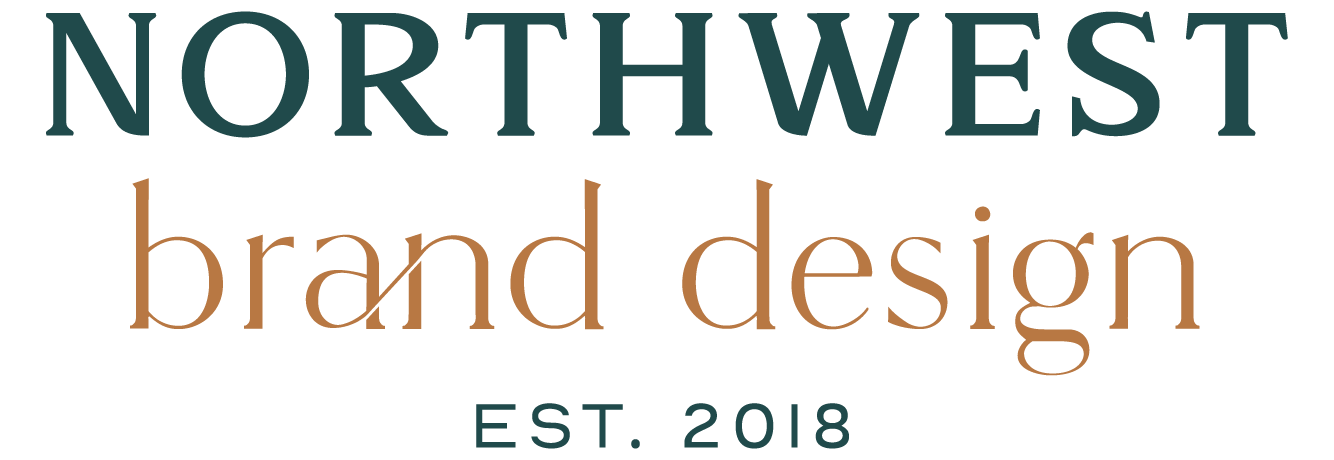What Comes First - Logo Design or Branding?
In the world of brand identity and marketing, the relationship between logo design and branding is often a source of confusion for many people. Should a business focus on creating a compelling logo first, or should it delve into the intricate realms of branding strategy? This blog post aims to unravel the complexities surrounding this question, exploring the evolution of logos, the history of logo design, and the crucial role they play in shaping a brand's identity.
The Brief History of Logos: From Coats of Arms to Modern Icons
To better understand the current brand era and the current trends, it's helpful to reflect on the past and explore the brief history of logos. Before the digital era and colorful printed graphics, symbols like coats of arms were used to represent families, kingdoms, and institutions. These early emblems were the precursors to what we now recognize as logos.
The invention of the printing press in the 15th century drastically changed the way information was viewed and delivered. This technological leap also influenced the development of logos, as organizations started using printing materials to reproduce their symbols more readily and widely. However, it wasn't until the 20th century that logos truly began to differentiate themselves as an essential part of brand identity.
The Evolution of Logos: From Simple Designs to Complex Brand Strategies
Looking back at past logos, it’s evident that logos and branding have evolved significantly over the years. What started as basic symbols transformed into intricate designs, reflecting the changing dynamics of brands and consumer tastes.
In design history, logos were typically a straightforward representation of a company's name. However, with the rise of brand strategy, logos began to incorporate more elements that conveyed the essence of the brand. Take, for instance, the Nike swoosh – a simple yet highly effective logo that has become synonymous with the brand's identity.
The Role of Brand Naming and Strategy in Logo Creation
Brand naming and strategy play pivotal roles in the development of logos. A successful logo goes beyond being just visually appealing; it must encapsulate the brand's values, mission, and story. Companies invest substantial resources in brand strategy to ensure that their logos become easily recognizable and evoke specific emotions among consumers.
In the modern era, where digital presence is paramount, branding designs are carefully crafted to establish a cohesive visual identity across various platforms. From websites to social media profiles, companies strive to maintain a consistent graphic identity that reinforces their brand message.
Effective Logos: More Than Just Aesthetics
While aesthetics are definitely crucial, an effective logo goes beyond mere visual appeal. It should be memorable, scalable, and versatile. A logo that stands the test of time is one that adapts to various mediums and remains relevant in different contexts.
The digital era has introduced new challenges and opportunities for logo designers. Logos must now be adaptable to various screen sizes, ensuring a seamless experience across devices. This shift has also given rise to freelance designers who specialize in creating logos tailored for the digital landscape.
Corporate Identity: The Marriage of Logos and Branding
In the corporate world, logos and branding are inseparable components of corporate identity. A successful corporate identity is not just about having a beautiful logo; it involves creating a holistic brand experience for customers and stakeholders. This experience extends beyond visual elements to include brand messaging, customer interactions, and overall brand perception.
Large corporations often invest substantial resources in identity designers and brand strategists to ensure that every aspect of their brand aligns with a cohesive vision. The synergy between logo design and branding is crucial in building a strong and recognizable corporate identity.
The Impact of Logos on Consumer Perception
A successful logo can significantly influence consumer perception. It becomes a symbol that consumers associate with a particular product or service. Think about the Apple logo – a simple, yet iconic design that has become synonymous with innovation and quality. The Apple logo represents more than just a company; it embodies a lifestyle and a commitment to excellence.
Companies understand the power of logos in shaping consumer perception, and they invest in creating logos that resonate with their target audience. This involves understanding the psychology of colors, shapes, and symbols to evoke specific emotions and associations.
Challenges in Logo Design: Balancing Tradition and Modernity
In the ever-evolving world of design, striking a balance between tradition and modernity is a constant challenge. Some brands choose to retain a sense of nostalgia in their logos, paying homage to their roots and history. Others opt for a more contemporary approach, embracing minimalism and simplicity.
The challenge lies in creating a logo that not only reflects the brand's heritage but also appeals to the current and future generations. This delicate dance between tradition and modernity is evident in the evolution of iconic logos like Coca-Cola, which has managed to maintain its timeless appeal while adapting to contemporary design trends.
The Future of Logos: Adapting to Changing Trends
As we look ahead, the future of logos is intertwined with the ever-changing landscape of design trends and consumer behavior. The digital age has ushered in a new era of dynamic logos that can adapt to different contexts and user experiences. Augmented reality, interactive design, and personalized branding experiences are shaping the next phase of logo evolution.
Freelance designers, armed with the latest tools and technologies, are at the forefront of experimenting with innovative logo designs. The democratization of design software has empowered individuals and small businesses to create professional-looking logos, challenging the traditional approach of hiring expensive design agencies.
The Symbiotic Relationship Between Logos and Branding
When it comes to the question of what comes first – logo design or branding – it becomes evident that these two elements share a symbiotic relationship.
While a logo is the visual representation of a brand, branding is the comprehensive strategy that gives the logo its meaning and context.
The history of logo design reflects the evolution of business and design practices. From simple coats of arms to modern, dynamic logos, the journey has been one of constant innovation and adaptation. Successful logos are not just products of aesthetic design; they are born from a deep understanding of brand strategy and consumer psychology.
As we navigate the brand landscape of the future, the challenge lies in creating logos that not only stand out visually but also resonate with the ever-changing expectations of consumers. The apple logo, a symbol of innovation and simplicity, serves as a testament to the enduring power of effective logo design in shaping the identity of iconic brands.
In essence, the question of what comes first – logo design or branding – is a nuanced one. It's not a matter of one preceding the other but rather a harmonious collaboration that results in a powerful brand identity. As businesses continue to evolve and adapt to new trends, the synergy between logos and branding will remain a cornerstone of successful brand development.
If you are ready to take the next step in building your ideal brand, reach out to us today to schedule a free consultation. We can’t wait to help bring your brand to life!




